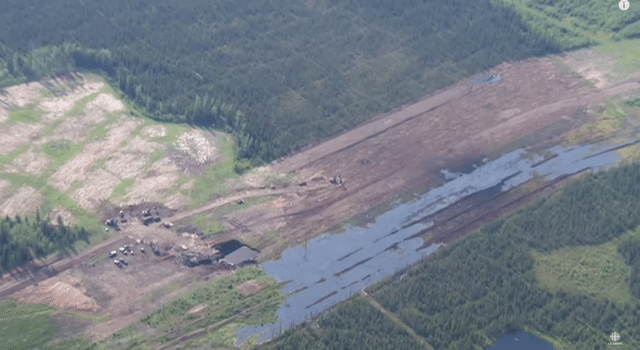A pipeline at Nexen Energy’s Long Lake oilsands facility southeast of Fort McMurray, Alberta, spilled about five million liters (32,000 barrels or some 1.32 million gallons) of emulsion, a mixture of bitumen, sand and water, Wednesday afternoon — marking one of the largest spills in Alberta history.
According to reports, the spill covered as much as 16,000 square meters (almost 4 acres). The emulsion leaked from a “feeder” pipe that connects a wellhead to a processing plant.
At a press conference Thursday, Ron Bailey, Nexen vice president of Canadian operations, said the company “sincerely apologize[d] for the impact this has caused.” He confirmed the double-layered pipeline is a part of Nexen’s new system and that the line’s emergency detection system failed to alert officials to the breach, which was discovered during a visual inspection.
At this time, the company claims to have the leak under control, according to CBC News.
Nexen’s “failsafe” system didn’t detect massive pipeline spill: http://t.co/ULEnxlmQEN pic.twitter.com/DmChECTUX7
— Anna Mehler Paperny (@amp6) July 17, 2015
The spill comes at a particularly bad time for Canada’s premiers, who are poised to sign an agreement three years in the making to fast-track the approval process for new oil sands pipelines while weakening commitments to fight climate change, according to Mike Hudema, a climate and energy campaigner for Greenpeace.
“As provincial premiers talk about ways to streamline the approval process for new tar sands pipelines, we have a stark reminder of how dangerous they can be,” Hudema said in a statement. “This leak is also a good reminder that Alberta has a long way to go to address its pipeline problems and that communities have good reasons to fear having more built.”
New pipelines would lead to more development of the tar sands, Canada’s fastest growing source of carbon emissions, Hudema said. “We need to stop new pipeline projects before they’re built and focus on building renewable sources of energy that are sustainable and won’t threaten communities, our environment, and the planet.”
Raw footage of the emulsion spill from CBC News.
Canada’s premiers aren’t alone in seeking to remove barriers to new pipeline construction in order to get more tar sands flowing out of Alberta. It recently came to light that Wisconsin officials worked with an attorney and lobbyist for Canadian pipeline company Enbridge to draft a controversial provision placed into the 2015 Wisconsin Budget that would fast-track expansion of the company’s Line 61 pipeline, what’s been called a “Keystone XL clone.”
Nexen and Alberta regulators say it’s too soon to determine what caused the pipeline failure Wednesday, or how long it was leaking before it was shut off. The emulsion has so far not reached any bodies of water, according to reports, but did flow into muskeg or bog.
This is the biggest spill at least in recent Alberta history. Last March, 2.7 million liters of condensate (about 17,000 barrels, or 700,000 gallons), used to dilute heavy oil so it flows through pipelines, were spilled at Murphy Oil’s Seal oilfield in northwestern Alberta.
In 2011, 4.5 million litres of oil (over 28,000 barrels, or 1.2 million gallons) leaked from a Plains Midstream pipeline into marshlands near the northern Alberta community of Little Buffalo. A year later, about half a million litres of oil spilled from another Plains pipeline into the Red Deer River in central Alberta.
Plains Midstream is a subsidiary of Houston-based Plains All-American Pipeline, the company that owns the pipeline that spilled 105,000 gallons (2,500 barrels) of oil near Santa Barbara, California earlier this year.
Image Credit: CBC via Youtube.
Subscribe to our newsletter
Stay up to date with DeSmog news and alerts






